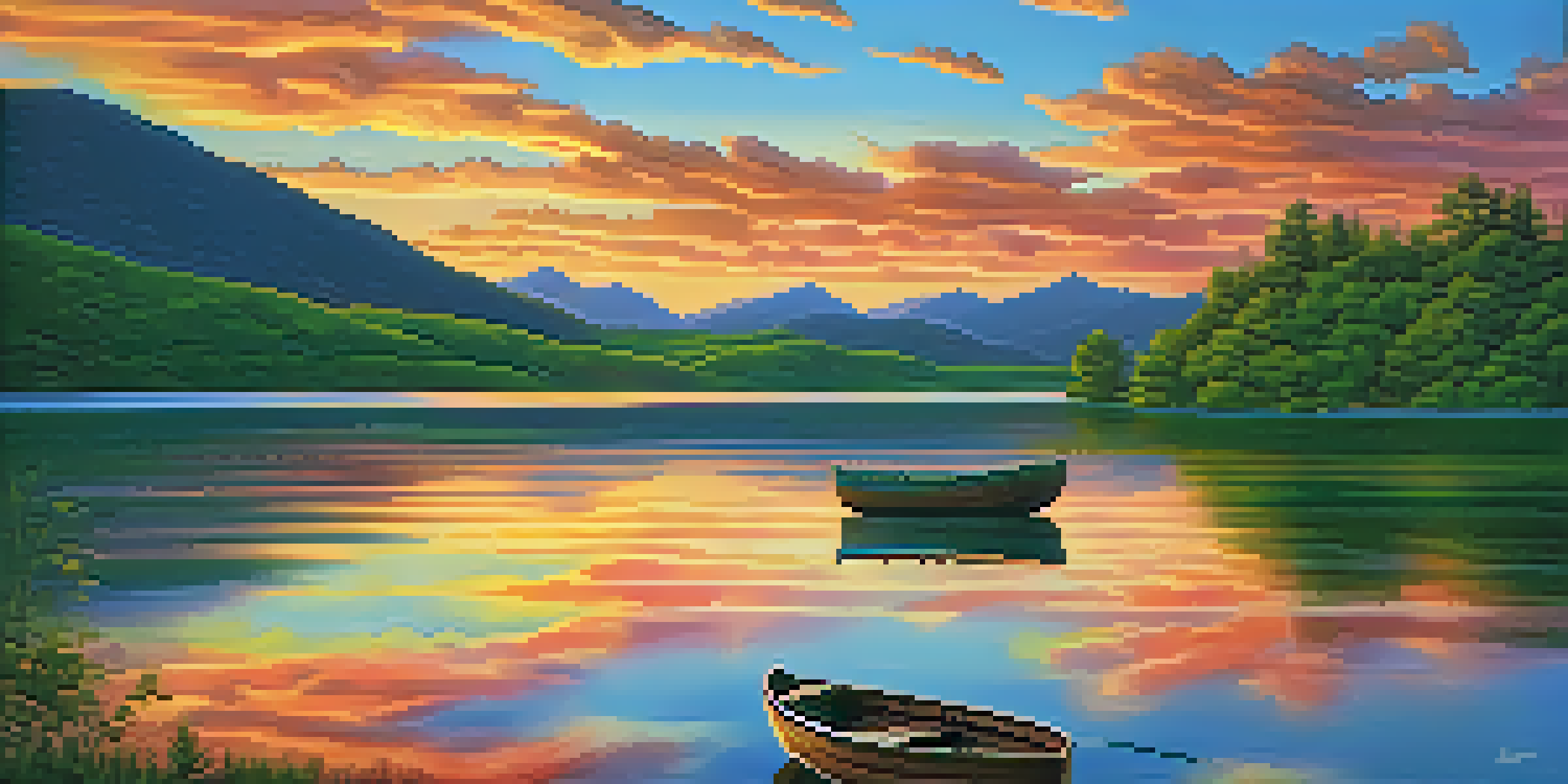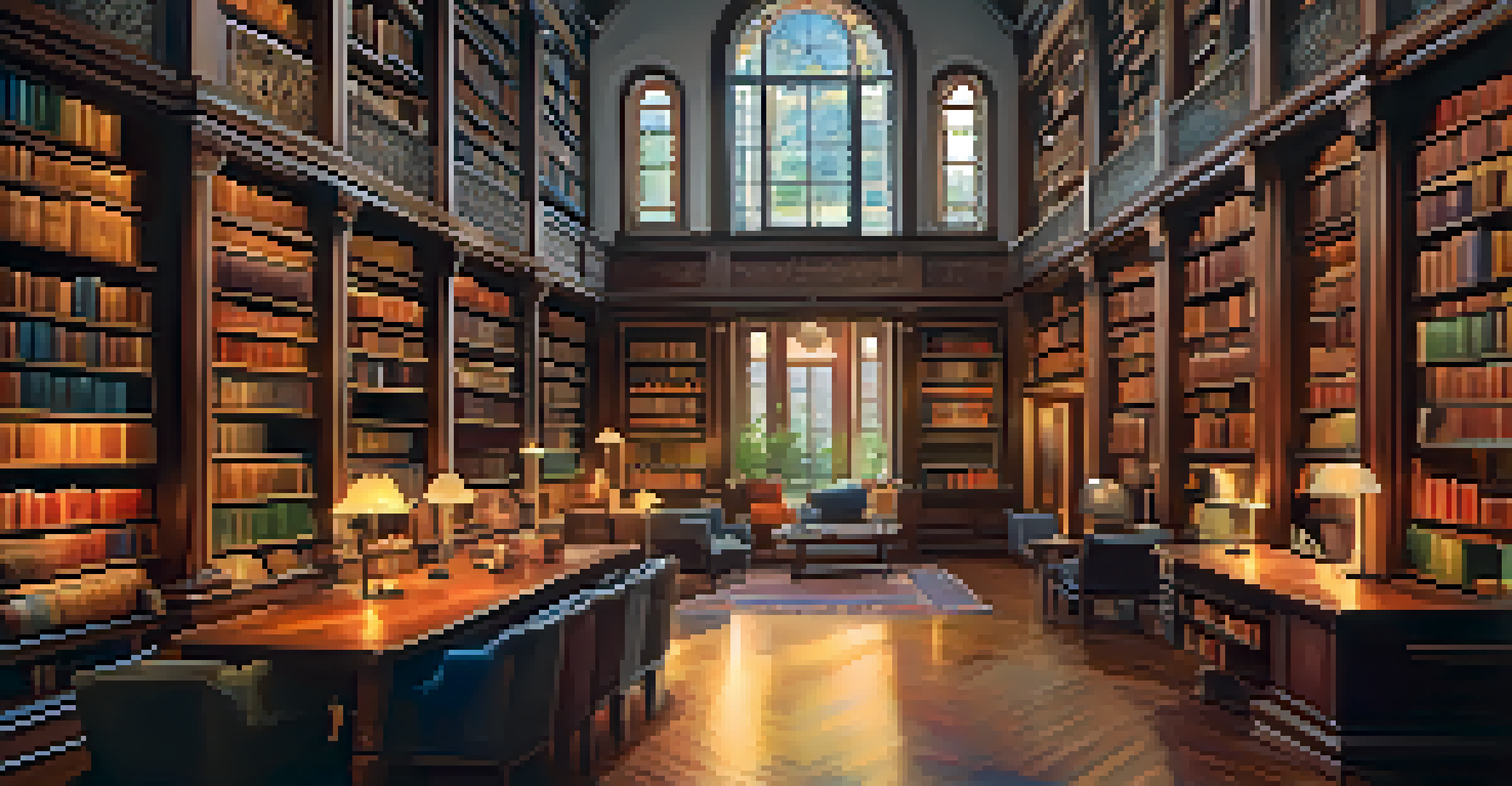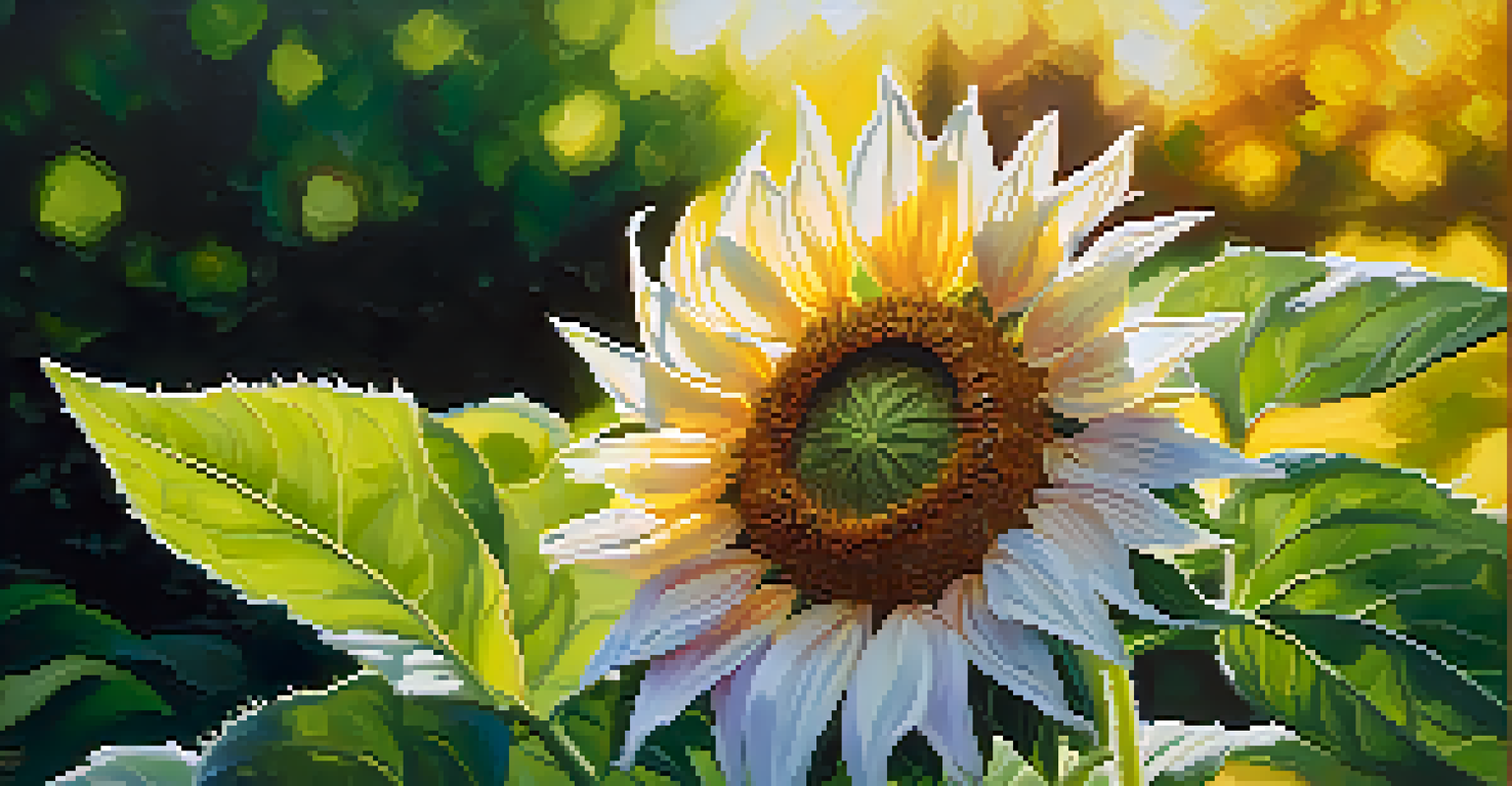The Art of Compositing: Blending Real and Digital Worlds

Understanding Compositing: The Basics Explained
Compositing is the art of blending multiple visual elements into one cohesive image. Think of it like creating a delicious smoothie; you take various fruits, blend them together, and end up with a tasty drink that’s better than any single fruit alone. In visual effects, this means merging real-life footage with digital elements seamlessly to tell a more compelling story.
Compositing is the art of blending reality with imagination to create a new narrative.
At its core, compositing involves layering images and adjusting them to create a unified scene. This can include adding backgrounds, special effects, or even characters that weren’t part of the original shot. The goal? To make everything look like it belongs together, giving viewers an immersive experience.
The magic of compositing lies in its ability to stretch the limits of creativity. With the right techniques, artists can transport viewers to fantastical realms or enhance mundane scenes, making everyday life feel extraordinary. It's a powerful tool that allows for endless possibilities in visual storytelling.
Key Techniques in Compositing: Tools of the Trade
When it comes to compositing, there are several essential techniques that every artist should know. One of the most common is chroma keying, often referred to as 'green screen' technology. This method involves shooting subjects against a solid color background, which can then be easily replaced with any digital background, opening up a world of creative potential.

Another vital technique is masking, which allows artists to isolate specific parts of an image. Imagine using a stencil to paint; masking enables you to control where the paint goes, ensuring that only certain areas are affected. This is particularly useful when blending elements from different sources, allowing for a polished final piece.
Compositing Blends Visual Elements
Compositing combines real and digital elements to create immersive visuals that enhance storytelling.
Additionally, color grading is crucial for achieving a harmonious look in a composite. Just like an artist mixes colors on a palette to create a cohesive painting, color grading helps unify the tones of different elements so they feel like part of the same scene. Mastering these techniques can elevate a project from good to truly breathtaking.
The Role of Lighting in Compositing: Making It Real
Lighting plays a critical role in compositing, often making the difference between a convincing scene and one that feels disjointed. It’s all about matching the lighting of the digital elements with the real footage. For example, if your real-world scene is drenched in warm sunlight, but your digital elements are cast in cool shadows, the mismatch will be stark and distracting.
Good design is about making other designers feel like idiots because that idea wasn’t theirs.
To achieve realistic lighting, artists often analyze the source of light in their footage. This includes observing its direction, intensity, and color. By mimicking these characteristics in the digital additions, the composite can feel more authentic, enhancing the viewer's immersion in the scene.
Furthermore, adding subtle shadows and reflections can significantly enhance realism. Just like how a tree casts a shadow on the ground, digital elements need to interact with their environments to appear believable. This attention to detail is what separates amateur projects from professional-grade work.
Storytelling Through Compositing: Crafting Narratives
Compositing is not just a technical skill; it’s also a storytelling tool. Each layer added to a scene can convey information, evoke emotions, and enhance the narrative. For instance, a character walking through a vibrant, digitally created city can communicate a sense of adventure and excitement, drawing the audience deeper into the story.
Effective compositing allows filmmakers to visualize their ideas without the constraints of reality. Consider how animated films use compositing to create entire worlds that reflect the emotions of their characters. The synergy between real and digital elements can amplify the story’s themes, making it resonate more with the audience.
Master Key Techniques for Success
Techniques like chroma keying, masking, and color grading are essential for achieving seamless composites.
Ultimately, the best composites serve the story first, allowing the visual elements to enhance rather than overshadow the narrative. By focusing on how each piece contributes to the overall tale, artists can create memorable experiences that linger long after the credits roll.
Challenges in Compositing: Overcoming Obstacles
While compositing can be immensely rewarding, it’s not without its challenges. One common hurdle is dealing with mismatched perspectives between real and digital elements. If a digital object looks too flat compared to the three-dimensional nature of the real footage, it can break the illusion, making the composite feel fake.
Another challenge is achieving consistent quality across different elements. Variations in resolution, texture, and detail can make it difficult to blend everything seamlessly. This is where attention to detail becomes vital; artists must fine-tune each component to ensure they all complement each other.
Additionally, time management is crucial in the compositing process, especially in a fast-paced industry. Balancing quality with deadlines can be tricky, but learning to prioritize tasks and streamline workflows can help artists meet their creative vision without sacrificing quality.
The Future of Compositing: Trends to Watch
As technology evolves, so too does the world of compositing. One exciting trend is the increased use of virtual and augmented reality, which allows for more interactive and immersive experiences. Imagine stepping into a scene that blends the real world with stunning digital elements right before your eyes; it’s a thrilling prospect for both creators and audiences alike.
Another trend is the integration of artificial intelligence in compositing tools. AI can automate certain tasks, such as object tracking or color correction, saving artists time and allowing them to focus more on the creative aspects of their work. This could usher in a new era of efficiency and creativity in the industry.
Lighting Enhances Realism
Proper lighting and shadows are crucial in compositing to ensure digital elements match the real footage.
Moreover, as accessibility to powerful software increases, more creators are diving into compositing, leading to a surge of innovative ideas and techniques. The democratization of these tools means that fresh perspectives are entering the field, pushing the boundaries of what’s possible and fostering an exciting environment of collaboration and cross-pollination.
Getting Started with Compositing: Tips for Beginners
If you’re eager to dive into the world of compositing, starting with the right tools is essential. Software like Adobe After Effects and Nuke are popular choices among professionals, but there are also user-friendly options like HitFilm Express that can help beginners find their footing. Choose a program that suits your level and start experimenting.
Practice is key to mastering compositing techniques. Begin with small projects, like combining a simple background with a foreground element. This will help you grasp fundamental concepts like layering, masking, and color grading. As you grow more comfortable, you can gradually take on more complex compositions.

Lastly, don’t hesitate to learn from the community. Online tutorials, forums, and social media groups can offer invaluable resources and support as you embark on your compositing journey. Sharing your work and receiving feedback from others can provide both motivation and insights to improve your craft.